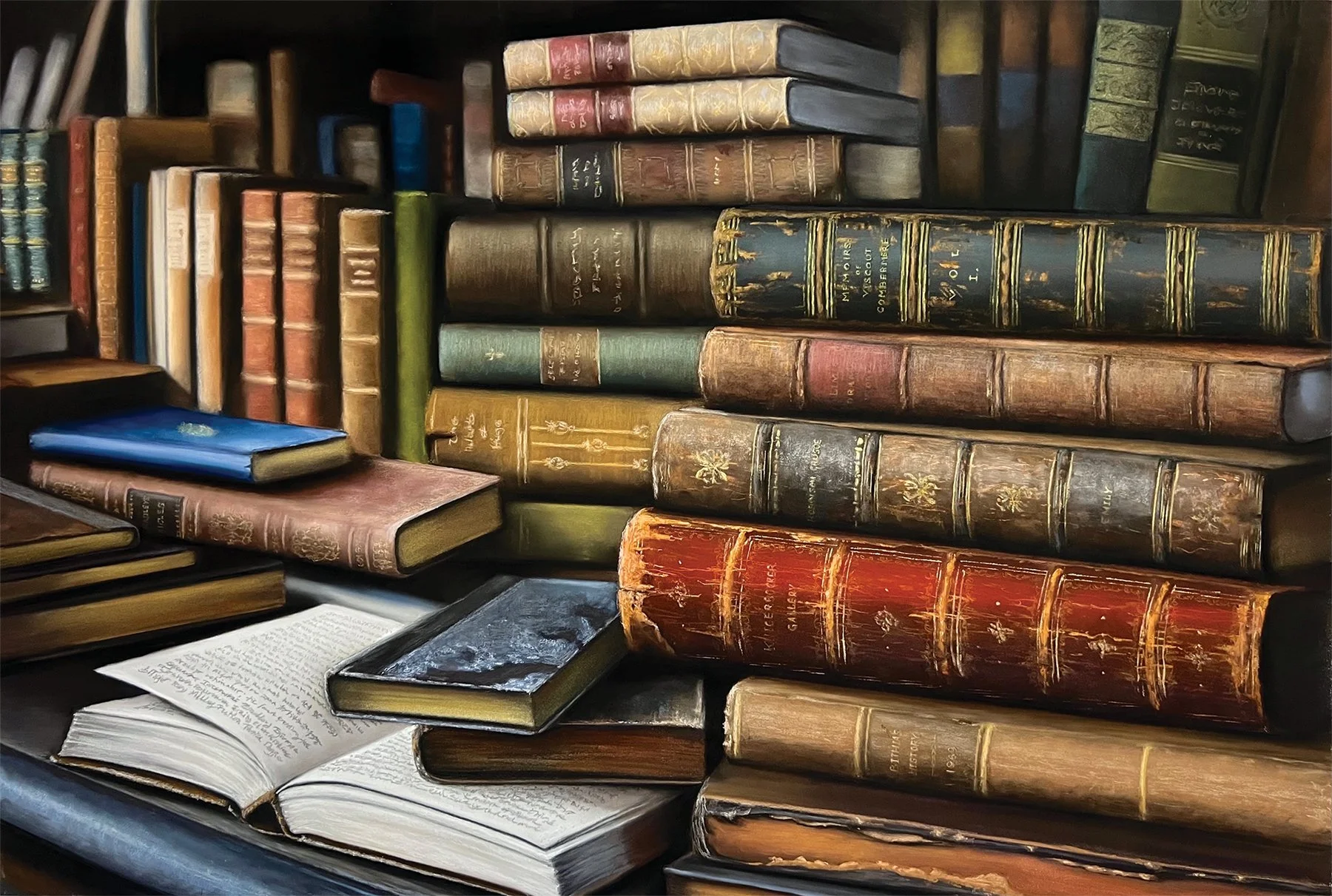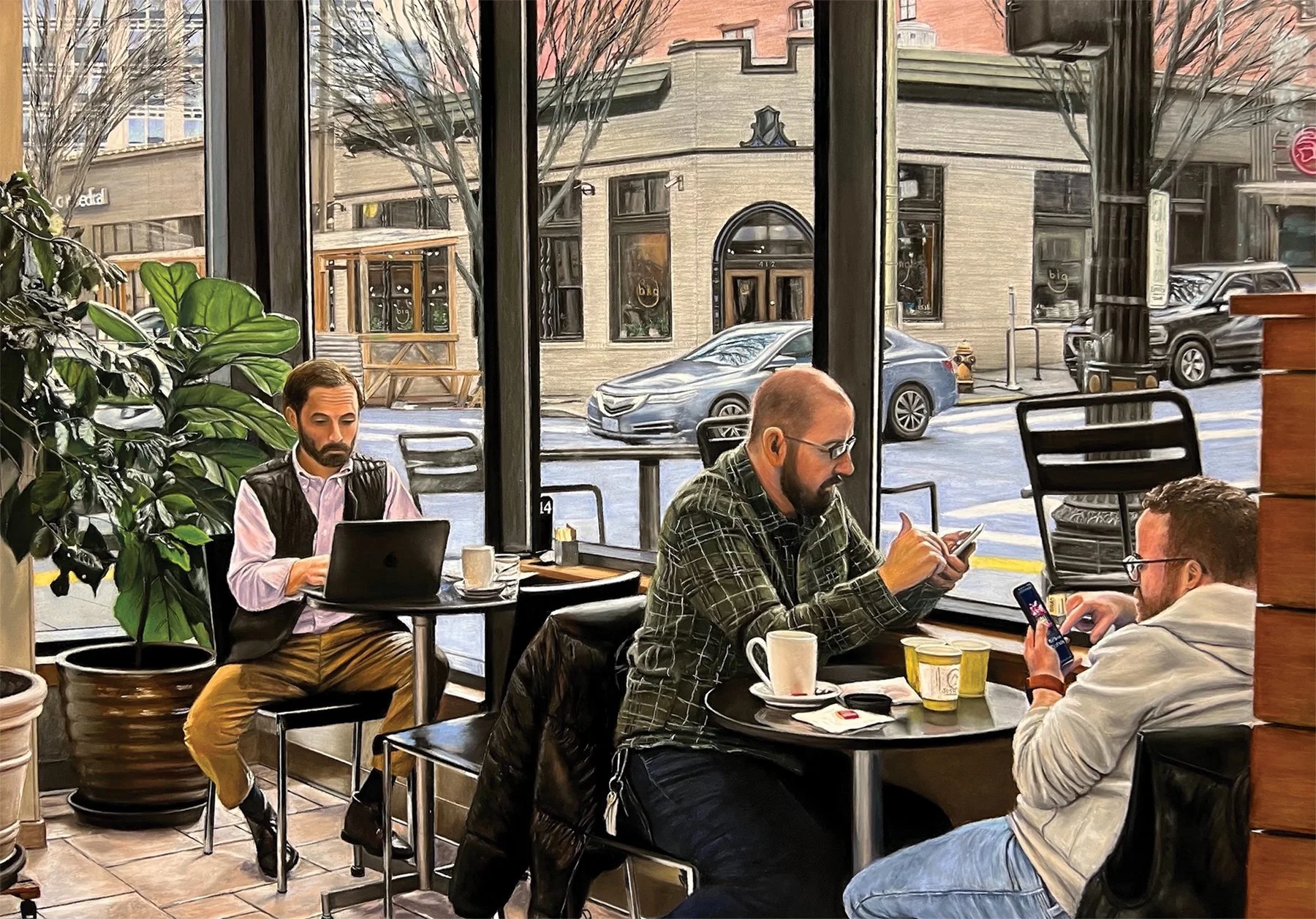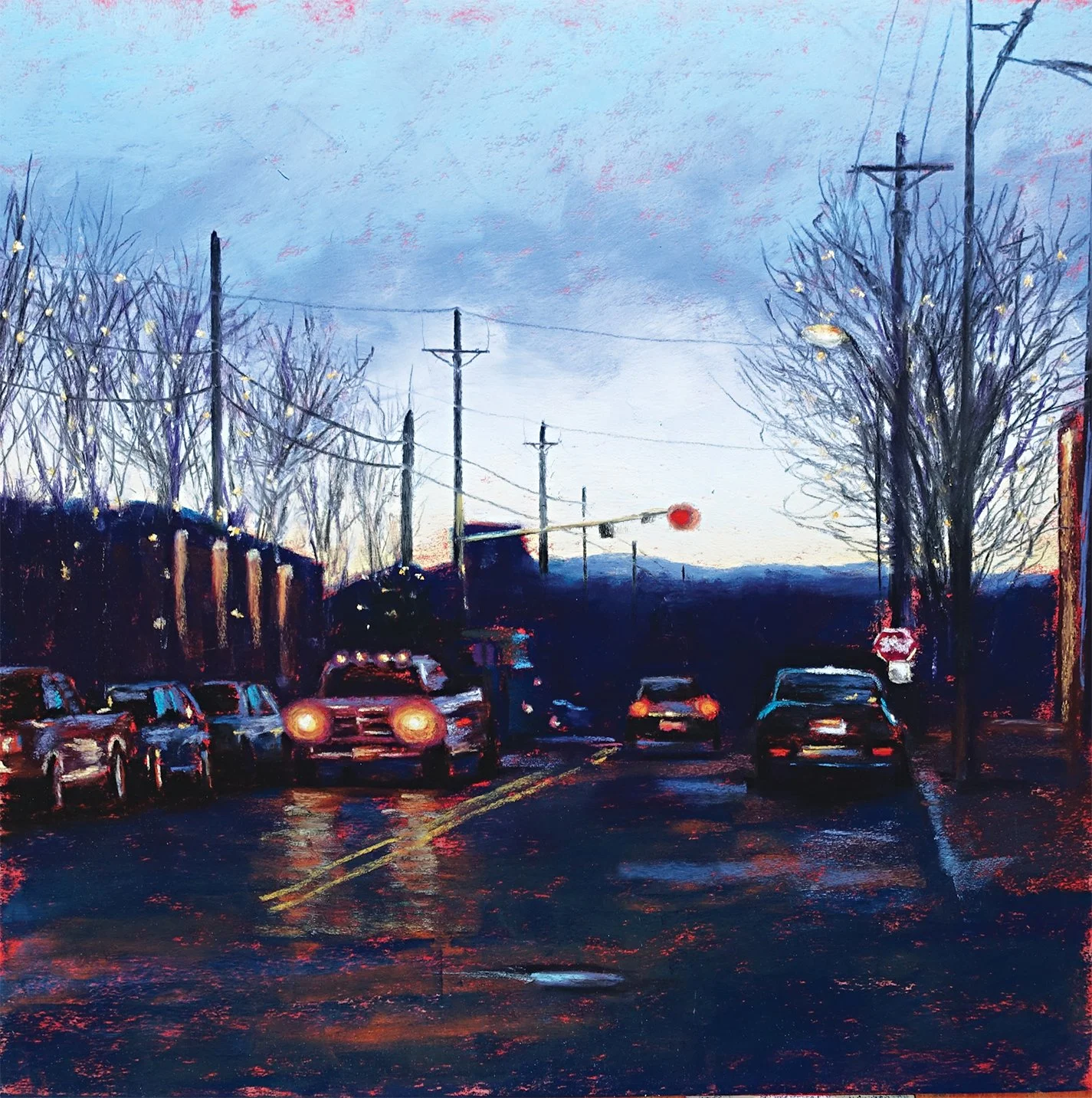3rd Place Winning Entry | 2025 Pastel Competition
Bithia Bjurman, “Shelf Life,” pastel
Bithia Bjurman Manhattan Morning, pastel
Bithia Bjurman Bound and Beautiful, pastel
Bithia Bjurman Vices and Devices, pastel
Bithia Bjurman Carlton Post
Bithia Bjurman From This Side of the Bar, pastel
BITHIA BJURMAN | 3RD PLACE
2025 PASTEL COMPETITION
From her quiet studio in the Pacific Northwest, pastelist Bithia Bjurman creates paintings that capture the color, atmosphere, beauty, and essence of everyday life.
Bjurman has only been a serious artist since 2022. For many years she was an engineer in the Silicon Valley tech industry, but her mother’s music and artistic talent and her engineer father’s precision and analytic skills gave her what she needed to create realistic work that draws the viewer into special moments in time.
Bjurman holds Masters Circle status with the International Association of Pastel Societies; is a Signature Member with the Pastel Society of America; and a member of numerous other art organizations.
Recently we had a conversation with the artist about her work.
You often begin with photographs. How do you decide which images become paintings, and what role does photography play in your artistic process?
I almost always paint from photographs because the level of detail in my work requires a strong reference. I keep my camera close at hand since I never know when an ordinary moment might turn extraordinary. Sometimes, when I am lucky, I can catch that fleeting bit of life before it disappears, and those are usually the best references.
When I look through my photos later, I can tell which ones might become paintings. There is a certain “it” quality that draws me in, something about the balance of story, light, and design that holds my attention. That spark tells me there is a painting waiting to be found.
How do you balance narrative and atmosphere in your compositions? Are you more interested in telling a story or evoking a feeling?
I think of the story and the feeling as inseparable. I am most interested in telling a story that creates a feeling. The story comes first, the moment, the gesture, the suggestion of something happening, and through that, emotion emerges. Each story is told through mood, and each mood deepens the story.
There’s a recurring theme in your work of finding beauty in overlooked or ordinary places. How do you decide which everyday moments are worth elevating through art?
I am drawn to stories that exist in plain sight. What catches my eye is not light but meaning, something that hints at life unfolding even in the most familiar surroundings. It might be an old sign, a table after a meal, or a shelf of groceries. When a scene feels both ordinary and extraordinary at once, I know it is worth painting.
Shelf Life seems to focus on a quiet, urban moment. What made it visually or emotionally compelling to you?
Shelf Life was inspired by a small suburban grocery store in my hometown. There was nothing remarkable about the setting itself, but the color and form of the vegetables made the scene feel alive. It struck me as an overlooked place to find beauty. That moment reminded me how life, in all its color and imperfection, can be found in the most routine corners of our day.
In many of your pieces, you include people in the scene. What prompted you to leave out figures and focus only on the vegetables in Shelf Life?
In Shelf Life, the idea of adding figures never even entered my mind. The scene of the vegetables felt complete as it was. The story was already strong enough to be compelling and interesting on its own. Including people would have distracted from what I was trying to say. Sometimes the power of a painting lies in what is already there, without needing anything more.
Did you add “easter eggs” to Shelf Life? What prompts you to include this fun element in your work?
Yes, I did. I hid the names of my four cats, my husband, and my two adult children in Shelf Life. I add these because once a painting is finished, it can feel a bit sterile in a show space. The artist is removed and the piece no longer feels personal to me. That distance is even greater when a painting is sold, and I never see it again. By hiding these names or other hidden goodies, I feel connected to it still, as if a small piece of my world remains woven into the work.
Do you have any habits that help you stay connected to your creative instincts?
I stay connected by paying attention. I let curiosity lead me. Sometimes this means walking without purpose and noticing what catches my eye, or sitting quietly and watching how people move through a space. I often find inspiration in those pauses between doing and observing. I also revisit old reference photos to see if something new emerges from them. The act of seeing itself, really seeing, is what keeps me creative.
You’ve earned dozens of awards and shown in more than 60 exhibitions. What drives you in your work?
What drives me is the need to say something through my work. Each piece begins with an impulse to give form to an idea, a question, or a quiet truth about the world. It is not about creating something that simply looks beautiful or would fit well in a living room. It is about meaning. I paint because there is something worth expressing, and pastel gives me the voice to say it.
Looking ahead, I want to continue developing a body of work that tells stories about the world as I see it, one that reflects both the beauty and the complexity of ordinary life. I also want to share what I have learned with others who are seeking their own artistic voice. Teaching and mentoring are deeply rewarding because they remind me that art is a lifelong conversation, always evolving. The awards and exhibitions are wonderful affirmations, but they are not the destination. The real goal is to keep growing, keep discovering, and keep saying something that matters.
All images © Bithia Bjurman, shared with permission.








